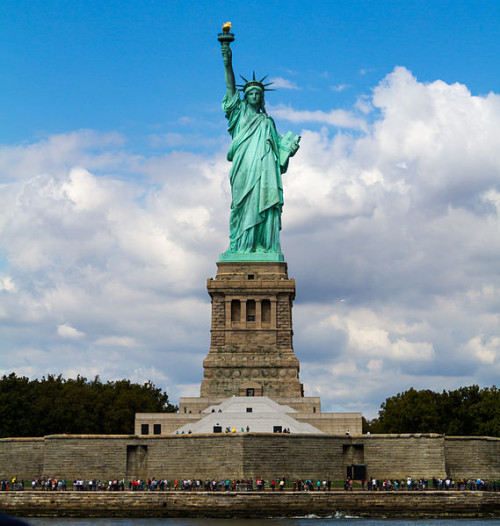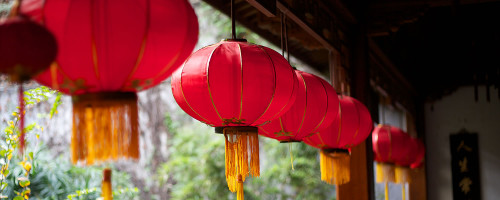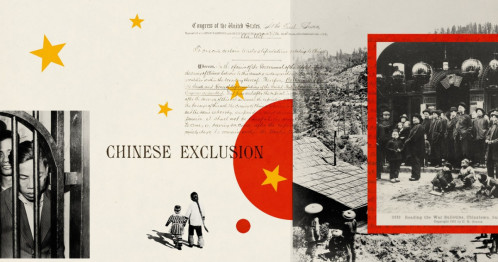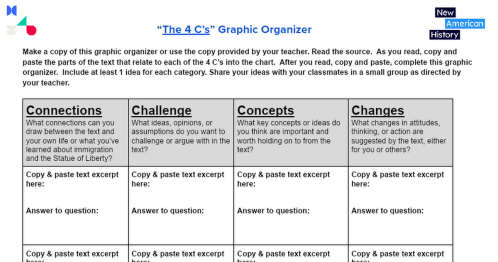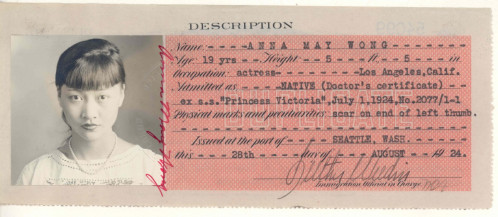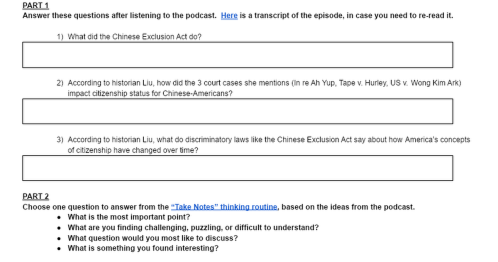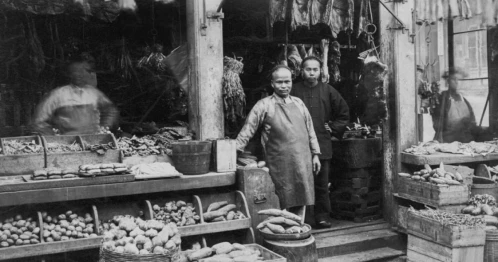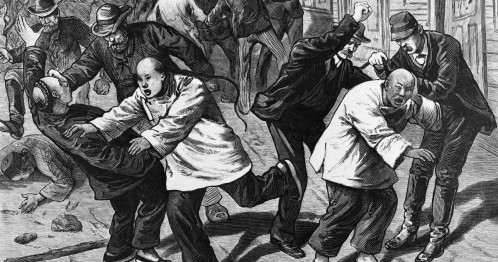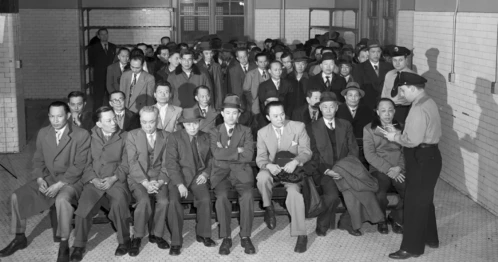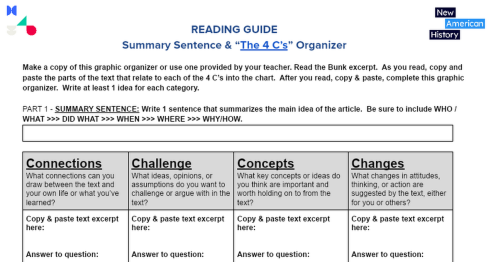This work by New American History is licensed under a Attribution-NonCommercial-ShareAlike 4.0 (CC BY-NC-SA 4.0) International License. Permissions beyond the scope of this license may be available at newamericanhistory.org.
The Chinese Exclusion Act:
Read for Understanding
In 2020 the United Nations reported a rise in Anti-Asian racism and Xenophobia during the COVID-19 flu pandemic. As you explore these learning resources, you will learn more about the role Chinese Americans have played in shaping our nation's past, and the ways in which American policies and discrimination have limited immigrants past and present.
Key Vocabulary
Jim Crow Laws - racial segregation and discrimination enforced by laws, customs, and practices, especially in the southern U.S. from the end of Reconstruction in 1877 until the mid-1900s
Lucrative - producing wealth
Naturalized Citizens - people who are born in another country and become legal citizens later on by meeting citizenship requirements
Norms - behaviors and customs that are widespread and usual
Provincial - an administrative district under the political control of a ruler
Purge - to get rid of
Surge - a swelling, rolling, or sweeping forward
Vigilantism - the act of enforcing the law or inflicting punishment without the legal authority to do so
Virulent - full of malice and ill intent
Visualize - to form a mental picture of
Engage:
How have U.S. policies limited Asian-American citizenship?
The Statue of Liberty is one of America’s best-known symbols, and it symbolizes different ideas to different people. How does one’s interpretation of the Statue of Liberty depend on one’s point of view and cultural background?- Look for patterns in your list. What do some or all of your words have in common?
- What does your list tell you about how you view the Statue of Liberty?
A CHINESE IMMIGRANT’S VIEW -- Read this letter written in 1885 by a Chinese immigrant to a New York newspaper, three years after Congress passed the Chinese Exclusion Act. This act suspended Chinese immigration to the U.S. for 10 years and denied Chinese immigrants the right to become naturalized citizens. As you read, your teacher may provide you a copy of this “4 C’s” graphic organizer, adding at least 1 idea for each category.
- What shaped Chinese immigrant Saum Song Bo’s view of the Statue of Liberty and of being an American citizen?
- How does this example show how a U.S. policy limited Asian-American citizenship?
Your teacher may ask you to record your answers on an exit ticket.
Explore:
How did Americans try to purge Chinese-Americans from the U.S.?
INTERPRET POPULATION DATA: In your group of three or four, access the American Panorama map, “Foreign-Born Population.” Take a few minutes to explore the map, including the ways data is visualized.Examine Chinese immigration in the 1800s by making a copy and completing this Data Organizer.
- From 1850 to 1900, how would you describe the changes in the Chinese-born population in the U.S.?
- Click on the 1880 vertical line in the “Population over Time” timeline. In your own words, summarize the story box in the lower right-hand corner.
- How did the Chinese Exclusion Act of 1882 affect the number of Chinese-born people in the 30 years after the act was passed?
- Conduct online research to answer these questions, based on the data: What accounts for the changes in the Chinese-born population from 1850 to 1900? (What was going on in China from 1850 to 1900? What was going on in the U.S.?)
Here are some suggestions for trustworthy sites: PBS: The Story of China, BBC China Timeline, Library of Congress Timeline of U.S. History
A STORY OF GOLD, JOBS, AND RACISM: Many Chinese immigrants escaped instability in China and moved to the western U.S. in the 1800s in search of gold, factory jobs, or work building the American rail system. Read this Bunk article excerpt called “The Forgotten History of the Campaign to Purge Chinese from America”.
After you read, complete a separate “4 C’s” organizer and share your ideas from each column of the chart in your small groups.
- How does the data you examined fit into the story of Asian-Americans in the U.S.?
- How did Americans try to purge Chinese-Americans from the U.S.?
Your teacher may ask you to record your answers on an exit ticket.
Explain:
What prompted the Chinese Exclusion Act, and what have been its lasting consequences?
THE BACKSTORY BEHIND CHINESE EXCLUSION: The relationship between China and America goes back to America’s beginning. Early Americans traded for such Chinese items as tea, porcelain, silk, and illegal opium. In the 1840s, Chinese immigrants started trekking to the American West amid its gold rush. They then helped build America’s transcontinental railroad and strengthen its agriculture and fishing industries. In response, white workers in the West felt threatened by Chinese workers: they saw Chinese laborers working for low wages and therefore thought they posed a risk to their livelihoods. And then in 1882, Congress passed the Chinese Exclusion Act, which marked the first time that an ethnic group in America was singled out and banned from being citizens. The act left an enduring legacy on the idea of American citizenship, especially for people of color.- What is the most important point?
- What are you finding challenging, puzzling or difficult to understand?
- What question would you most like to discuss?
- What is something you found interesting?
When you finish listening to the podcast, your teacher will provide a copy of this Take Note Listening Guide. Select and answer one of the Take Note questions above, as well as the Summary Questions. If working remotely, or using a device, you may answer using a collaborative tool such as Google Docs, or using a shared Google Slides deck. You will have an opportunity for your response to be shared with the class.
BEFORE EXCLUSION BECAME LAW: Laws can sometimes be the product of a place’s developed norms or attitudes. How did the attitudes and actions toward Chinese-Americans in California and the American West in the mid-1800s lead to the Chinese Exclusion Act of 1882?
- What is the most important point?
- What are you finding challenging, puzzling or difficult to understand?
- What question would you most like to discuss?
- What is something you found interesting?
- What were the attitudes and events that led to the Chinese Exclusion Act, and what has been the lasting legacy of the Act?
Elaborate:
How could we compare and contrast the history of the Chinese Exclusion Act and the history of Jim Crow laws in America?
Read the Bunk excerpt, “Racism Has Always Been Part of the Asian American Experience”. Make a copy, or your teacher will provide you a copy of this Reading Guide that contains a Summary Sentence and the 4 C’s thinking routine.
After you complete the Reading Guide, answer this question: Compare the history of the Chinese Exclusion Act and the history of Jim Crow laws. To do that, complete the Comparison Research Guide to organize your findings. Use the Bank of Sources on the guide to build your answer.
Your teacher may ask you to record your answers on an exit ticket.
Extend:
What can Americans today learn from the Chinese Exclusion Act?
Reflect on the causes and consequences of the Chinese Exclusion Act of 1882. Your teacher will provide a copy of this Reflection Guide for you to complete. The guide uses the “Values, Identities, Actions” thinking routine to generate ideas for further research.- Why do you think the history of the Chinese Exclusion Act matters today?
- What lessons should we Americans draw from it?
Citations:
“A Chinese Immigrant Reacts to the Statue of Liberty · SHEC: Resources for Teachers.” Social History for Every Classroom. American Social History Productions, Inc. - City University of New York. Accessed July 6, 2021. https://shec.ashp.cuny.edu/items/show/950.
Luo, Michael. “The Forgotten History of the Campaign to Purge Chinese from America.” The New Yorker. Accessed July 6, 2021. https://www.newyorker.com/news/daily-comment/the-forgotten-history-of-the-purging-of-chinese-from-america.
Nelson, R. K., Nesbit, S., Ayers, E. L., Madron, J., & Ayers, N. (n.d.). “Foreign Born” in American Panorama, ed. Nelson and Edward L. Ayers, https://dsl.richmond.edu/panorama/foreignborn/#decade=2010.
“Project Zero's Thinking Routine Toolbox.” PZ's Thinking Routines Toolbox | Project Zero, www.pz.harvard.edu/thinking-routines.
“To Be a Citizen?” BackStory. Virginia Humanities. Accessed July 6, 2021. https://www.backstoryradio.org/shows/to-be-a-citizen/#segment-in-the-shadow-of-chinese-exclusion.
Waite, Kevin. “The Forgotten History of the Western Klan.” The Atlantic. Atlantic Media Company, April 6, 2021. https://www.theatlantic.com/ideas/archive/2021/04/california-klans-anti-asian-crusade/618513/.
Waite, Kevin. “The Bloody History of Anti-Asian Violence in the West.” History & Culture - Race in America. National Geographic, May 10, 2021. https://www.nationalgeographic.com/history/article/the-bloody-history-of-anti-asian-violence-in-the-west.



